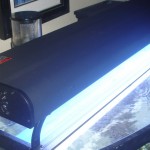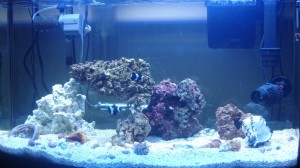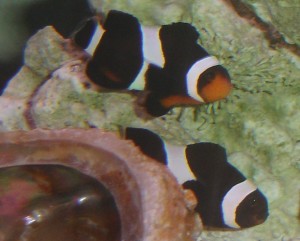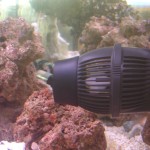We live in Gilroy, CA. About 30 miles south of San Jose. Even though there are two national brand pet stores in town, neither one has any marine live stock. You know these stores – the ones where the happy dog owner walks in with her pet on a leash, and buys anything she wants (as long as it’s not marine aquarium related). So, when we need to by live rock, salt, fish, coral (eventually – patience, Glen!), and pretty much anything else, we have to go to shops in San Jose.
When we decided to go get fish recently, we really weren’t sure how many, if any, of the fish stores we’d been to years ago were still in business. So, like any good geek would do, I googled “marine aquarium San Jose”
We took the map, read a few comments, and headed off to find the perfect marine aquarium store.
There is another one of the big national brand stores in Morgan Hill. We stopped there just in case they had something worth looking at. They didn’t. They had a stack of 9 tanks with marine fish. Nothing really remarkable except for the woman who was “cleaning” one of the tanks, with fish in it, by waving a fish net all over. It looked more like she was just stirring up the mess. Presumably, the filters would clean the mess, but it sure didn’t look like it was working when we left.
The second store we went to claimed to have a shark in a 2,000 gallon fish tank. When we got there, they were right – it was a 2,000 gallon fish tank with a shark in it. One shark. Just one. Nothing else. Not even sand in the bottom of the tank. And the shark wasn’t even that big – maybe a foot long. The store wasn’t that remarkable either – a few marine fish and some equipment. We didn’t stay long.
We had better luck with the next few stores. Dolphin Pet Village in Campbell was one that we had been to years ago. It’s still one of the best aquarium stores in the area. They have lots of fish and coral. I counted 4 huge bins of live rock, each claiming it was from a different area. They also have new and used fish tanks, and all of the equipment you could ask for. I even saw someone purchasing saltwater in 5 gallon water bottles.
We then went to my personal favorite marine aquarium store, Aquatic Gallery in Milpitas. They have no equipment at all, but they have lots of fish and coral. Their display tanks alone are worth coming and visiting. They remind me of museum quality aquariums. The staff is very friendly and helpful. This is the store that got me headed down the path of a reef aquarium.
On our way home we dropped by another store just to see what it was like. King Aquarium in San Jose turns out to be another very good marine aquarium store. They had a big selection of fish, plus lots of fish tanks and other equipment. If they had coral, I don’t remember it.
Of course, after all that driving around we came home and purchased the submersible pump and lighting from an online store. Sigh. What can I say? Less expensive and the shipping was free. I’ve also been watching Craig’s List to see if I can find cheap used tanks and equipment. I’d love to build a 150+ gallon reef tank some day (don’t tell Mrs Salty Geek).
Do you have a favorite aquarium store in your area? Feel free to comment about it here if you’d like.



